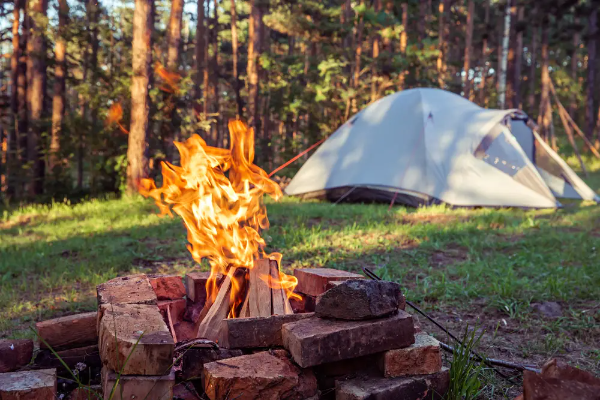A hot tent is a type of camping tent designed to be used with a wood stove or other heating source. This setup allows campers to stay warm in cold weather conditions. Hot tents are especially popular among winter campers, hunters, and those who enjoy extended stays in the wilderness.
Key Features of Hot Tents
Material Quality Hot tents are typically made from durable, weather-resistant materials. Common fabrics include canvas or heavy-duty nylon. These materials not only provide insulation but also withstand harsh weather conditions.
Stove Jack One of the essential features of a hot tent is the stove jack. This is an opening designed for a stovepipe, allowing safe ventilation for a wood stove. The jack is usually made of heat-resistant materials to prevent any fire hazards.
Ventilation Proper ventilation is crucial in a hot tent. While the stove provides warmth, it can also produce smoke and carbon monoxide. Hot tents often come with vents or windows that can be adjusted to ensure fresh air circulation while keeping the heat inside.
Insulation Many hot tents come with insulation layers, enhancing their ability to retain heat. This feature is especially important for winter camping, where temperatures can drop significantly at night.
Size and Space Hot tents vary in size. Some can accommodate just one or two people, while others can fit larger groups. A spacious interior allows for the stove and gear storage, making camping more comfortable.
Benefits of Using a Hot Tent
Extended Camping Seasons Hot tents allow campers to enjoy the outdoors during colder months. With proper heating, you can stay warm and comfortable, making winter camping feasible.
Comfort and Convenience The warmth provided by a wood stove creates a cozy environment. You can cook, dry wet gear, and even sleep comfortably without worrying about the cold.
Enhanced Social Experience Hot tents provide a gathering space. Campers can cook and socialize around the stove, creating a communal atmosphere.
Durability Hot tents are built to last. Their robust materials withstand harsh weather, making them a reliable choice for outdoor enthusiasts.
Choosing the Right Hot Tent
Size and Capacity Consider how many people will use the tent. A larger group may require a bigger tent, while solo campers can opt for a smaller model.
Weight and Portability If you plan to hike to your camping spot, weight matters. Some hot tents are lightweight and easy to carry, while others may be heavier but offer more space.
Ease of Setup Look for a tent that is easy to pitch. Some models come with color-coded poles and straightforward instructions, making setup quicker and hassle-free.
Stove Compatibility Ensure the tent can accommodate the wood stove you intend to use. Check the dimensions of the stove jack to confirm compatibility.
How to Use a Hot Tent
Setting Up Find a suitable camping spot away from flammable materials. Set up the tent according to the manufacturer’s instructions. Make sure to securely install the stove jack.
Installing the Stove Place the wood stove inside the tent, making sure it is stable. Feed the stovepipe through the stove jack and secure it to prevent leaks.
Starting the Fire Use dry wood and kindling to start the fire in the stove. Open the damper to regulate airflow and heat output.
Ventilation Management Adjust the tent vents and windows as needed. Monitor the air quality inside the tent, especially when the stove is in use.
Safety Precautions Always prioritize safety. Keep a fire extinguisher or water nearby. Avoid using the stove while sleeping to prevent carbon monoxide buildup.
Common Hot Tent Designs
Traditional Wall Tents These are often larger and made from canvas. They provide ample space and insulation, making them ideal for family camping.
Tipi Tents Inspired by Native American designs, tipi tents are conical and offer good ventilation. They are lightweight and easy to transport.
A-Frame Tents A-frame tents are simple to set up and provide good stability. They are suitable for solo campers or small groups.
Dome Tents These tents offer a good balance of weight and space. They are versatile and can be used in various weather conditions.
Maintaining Your Hot Tent
Regular Cleaning After each trip, clean the tent to remove dirt and debris. Store it in a dry place to prevent mold growth.
Checking for Damage Inspect the tent for any tears or damage. Repair any issues before your next camping trip to ensure safety.
Stove Maintenance Clean the stove regularly to prevent creosote buildup. This ensures efficient burning and reduces fire hazards.
Conclusion
Hot tents are a game-changer for winter camping enthusiasts. They provide warmth, comfort, and an inviting space to gather. With the right features and proper use, a hot tent can enhance your outdoor experience, allowing you to explore and enjoy nature year-round. Whether you’re a seasoned camper or new to the scene, investing in a hot tent can elevate your adventures in the great outdoors.
Related topics:
- Top 5 Multi-Fuel Camping Stoves
- Best Freeze-Dried Camping Meals
- The Best Winter Sleeping Bags: Guide to Staying Warm and Comfortable

